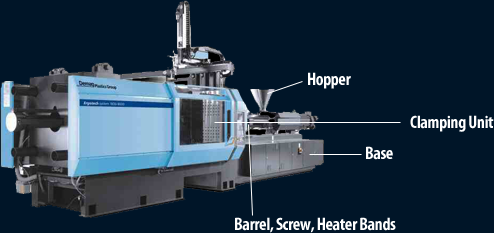The smart Trick of Manufacturing That Nobody is Talking Abouts
Wiki Article
Lean Production Fundamentals Explained
Table of ContentsThe Only Guide to Plastic ManufacturingThe Main Principles Of Plastic Manufacturing The Ultimate Guide To Lean ProductionAll about Lean ManufacturingThe 6-Minute Rule for Additive ManufacturingIndicators on Plastic Manufacturing You Should Know
The message on this page is a sample from our full White Paper 'Injection Moulding for Customers' - * Sample message * - for full guide click the download button over! Intro This overview is meant for individuals who are looking to resource plastic mouldings. It offers a much needed understanding right into all that is included with producing plastic components, from the mould device called for to the moulding procedure itself.If you want to discover even more, the guide covers kinds of mould tools, as well as special finishing processes such as colours & plating. Words that are highlighted can be discovered in the reference in the appendix ... Component I: Moulding: The Basics The Benefits of Injection Moulding Plastic injection moulding is a really specific procedure that uses a number of advantages over various other plastic processing approaches.
Precision is ideal for extremely elaborate components. You can hold this moulding in the palm of your hand and also it has managers, ribs, steel inserts, side cores and openings, made with a sliding shut off feature in the mould device.
Getting My Hon Hai Precision To Work


from material feed Product melting; material injection; shot time and ejection and also the re-closing of the mould tool ready for the next cycle. Draft angles - The walls of a moulded component must be slightly tapered in the instructions in which the component is ejected from the mould device, to allow the part to be expelled quickly.
Ejector stroke - The pressing out of ejector pins to eject the moulded component from the mould device. Ejector stroke rate, length and timing requires to be carefully managed to avoid damage to the ejectors and also mould tool, yet at the same time make the moulding cycle as brief as feasible.

The 6-Second Trick For Lean Production
Ribs - When a plastic component has slim wall surfaces, ribs are included in the design to make the slim walls stronger Side cores - Side action which generates a function on a moulded part, at an opposing angle to the typical opening direction of the mould tool. lean production. The side core requires to be able to retract as the plastic part can not be expelled otherwise.
Wall surfaces - The sides of a moulded component The text on this page is a sample from our complete White Paper 'Injection Moulding for Purchasers'.
Injection moulding is widely made use of for manufacturing a selection of parts, from the tiniest components to whole body panels of cars. Advances in 3D printing modern technology, using photopolymers that do not thaw during the injection moulding of some lower-temperature thermoplastics, can be used for some basic injection moulds. Shot moulding uses a special-purpose machine that has three parts: the shot system, the mould and the clamp.
The Only Guide to Lean Manufacturing
Process features [edit] Shot moulding makes use of a ram or screw-type bettor to force molten plastic or rubber material into a mould tooth cavity; this strengthens into a shape that has adapted the shape of the mould. It is most commonly this made use of to refine both thermoplastic and thermosetting polymers, with the quantity utilized of the previous being significantly higher.: 13 Thermoplastics are prevalent as this page a result of qualities that make them very appropriate for shot moulding, such as simplicity of recycling, flexibility for a variety of applications,: 89 and capacity to soften and flow on home heating.In several tooth cavity moulds, each tooth cavity can be identical and form the exact same parts or can be unique and form numerous different geometries during a solitary cycle.
When sufficient material has actually gathered, the material is compelled at high pressure and rate into the part creating dental caries. The precise quantity of shrinkage is a feature of the material being made use of, as well as can be reasonably predictable. To avoid spikes in stress, the procedure usually uses a transfer setting representing a 9598% complete dental caries where the screw changes from a constant rate to a constant pressure control.
Die Casting Fundamentals Explained
As soon as the screw reaches the transfer setting the packaging stress is used, which finishes mould dental filling and makes up for thermal shrinkage, which is rather high for thermoplastics about lots of various other products. The packing pressure is applied till the gate (tooth cavity entrance) solidifies. Due to check out here its little size, eviction is typically the top place to solidify via its entire thickness.: 16 Once eviction solidifies, say goodbye to material can enter the tooth cavity; as necessary, the screw reciprocates as well as gets material for the following cycle while the material within the mould cools to ensure that it can be expelled as well as be dimensionally secure.Report this wiki page